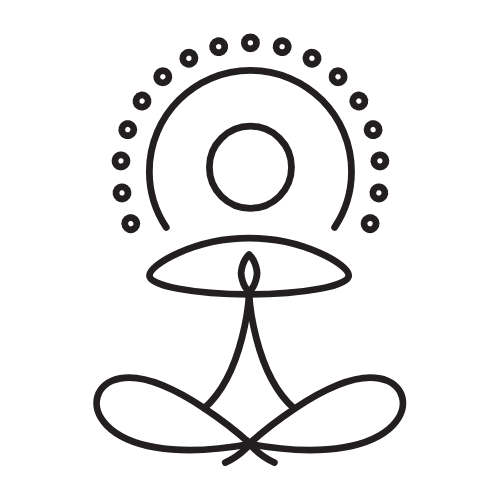Your body is constantly burning energy every single day, but for so many of us, conversations about the benefits of movement or figuring out calorie equations focus solely on structured exercise – the times you put on your trainers and activewear to work out, go for a long walk or head out for a run.
What we don’t often talk about is all the physical activity you do during the day that doesn’t fall into that “structured exercise” category. Let us introduce you to the power of non-exercise activity thermogenesis, aka NEAT.
What is non-exercise activity thermogenesis?
Non-exercise activity thermogenesis (NEAT) is a whole lot more simple than it sounds. Essentially, every single day your body is burning energy (which we generally measure in calories or kilojoules) in a variety of different ways, and NEAT refers to the calories you burn through physical activity and movement that you wouldn’t describe as a workout. This could be things like fidgeting on the couch, playing with your dog, picking up your toddler, gardening or walking down to the coffee shop.
It might not sound like much, but all of those movements can do wonders for your health and the energy you burn through non-exercise activity thermogenesis can actually account for a significant chunk of your daily calorie burn.
Your overall daily energy expenditure, explained
It can help to imagine your daily energy expenditure as a pie chart or a bar on a graph, divided into different sections that represent how the energy is burned. As the National Library of Medicine explains, energy expenditure has three main components: your basal metabolic rate (BMR), the thermic effect of food (TEF) and all the energy you expend moving your body.
60-70% of your daily energy expenditure: BMR
The biggest energy burner is your basal metabolic rate or BMR – meaning how much energy you would burn if you simply lay down and did nothing for the day. Your basal metabolic rate is how much energy your body burns simply carrying out all its vital processes at rest and according to Better Health Victoria, BMR accounts for 60-70% of your daily energy expenditure.
15-50% of your daily calorie burn: NEAT
The second biggest energy burner is your NEAT – all the movement you do throughout the day that isn’t structured exercise. And yes, even for people who exercise, NEAT generally burns more energy each day than formal exercise. There’s a reason the percentage range is so large, we’ll get into that shortly.
15-30% of your daily energy expenditure: EAT
The third biggest energy burner, and it’s not very big, is exercise activity thermogenesis (EAT) – that’s all your workouts, team sports or more formal exercise sessions.
8-15% of your daily energy expenditure: TEF
And the smallest energy burner of all (around 8-15%), but it’s still important to factor in, is the thermic effect of food (TEF) or how much your body burns, digests and absorbs food. Of all the macronutrients (carbs, protein and fat), protein requires the most energy to digest.
Why is NEAT worth talking about?
What’s most interesting about NEAT is how easily you can influence it compared to your basal metabolic rate and the thermic effect of food, alongside the health benefits you can reap by tapping into its potential. After all, it can account for a significant portion of your daily energy burn, depending on what you do.
If you spend your Saturday chilling out on the couch (and sometimes a lazy day is exactly what you need), your NEAT is going to be at the lower end of the scale. But if you walk down the road to get your coffee, take your dog to the park, wander around the house while talking on the phone and do a bit of gardening, you can bump your NEAT up significantly without tiring yourself out in the way that you would by increasing your workout frequency.
As you would expect, structured exercise does burn more calories in a shorter period of time, but over the course of a whole day or week, NEAT can contribute a lot more to your daily calorie expenditure. For example, you could burn 300 calories working out, but burn far more than 300 calories a day by simply increasing the amount that you walk and move during the day.
This is obviously very helpful to know if you’re trying to lose weight or manage your weight, but focusing on your NEAT can also benefit your health in so many ways, such as:
-
Improving your metabolic health
-
Enhancing your mood and mental wellbeing
-
Increasing your energy levels
-
Improving muscle engagement, strength and mobility
-
Reducing the health risks associated with prolonged sitting or a sedentary lifestyle, including cardiovascular disease and diabetes
-
Improving overall longevity
How to level up your NEAT
Increasing your non-exercise activity thermogenesis is simple – without adding more workouts to your schedule, find ways to add more movement to your day. Think of it like having lots of exercise snacks! Take the stairs instead of the elevator, park further away from where you need to go, stand while working or take a walking meeting and practice some regular stretches during your work day. Suddenly you look down at your YogaFokus app and realise you’ve clocked up thousands of steps without feeling like you’re doing more “exercise”. Even things that might seem insignificant like cleaning and fidgeting fall under this umbrella!
This is all about becoming a more active person overall, rather than someone who works out a lot, and it can be incredibly good for your physical and mental health without running the risk of overtraining.
Work out anywhere, anytime with YogaFokus
Ready for your first workout?
Get moving more often
It doesn’t matter if your goals are even remotely related to weight loss or not, moving your body more and increasing your NEAT is going to benefit your health in the long run.

